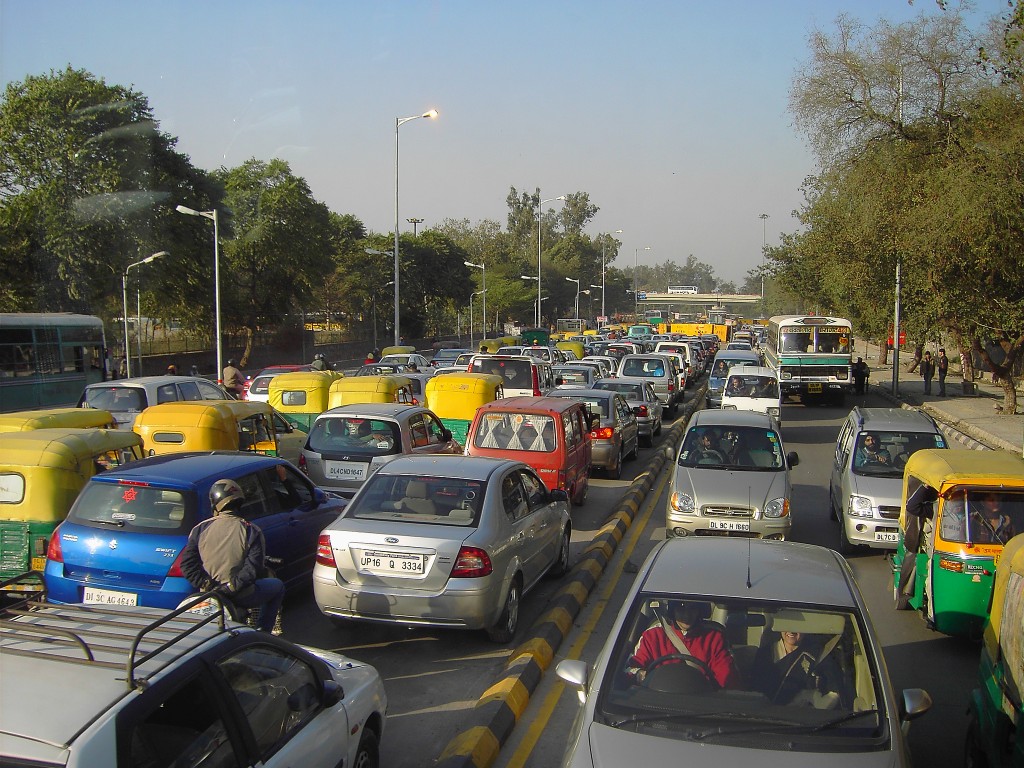Discuss countries with the worst air pollution, and China typically rises to the top of the list like smoke from a chimney.
Maybe it's the high-profile coverage of Beijing's smog-choked air, or the fact that China is now the world's largest new-car market, but either way the country is a poster child for pollution.
Yet China doesn't necessarily have the dirtiest air in the world.
DON'T MISS: Beijing Smog: So Bad That Emergency Plans Ban Half Its Cars Each Day
The air in India can be far worse, as journalist Gardiner Harris has found out over the past three years working for The New York Times from New Delhi.
Harris left the city recently after its polluted air aggravated his eight-year-old son's existing respiratory issues to the point that he developed full-blown asthma.
![Indian traffic [Image: Flickr user Peter Eich] Indian traffic [Image: Flickr user Peter Eich]](https://images.hgmsites.net/lrg/indian-traffic-image-flickr-user-peter-eich_100417997_l.jpg)
Indian traffic [Image: Flickr user Peter Eich]
It's a calculation every non-local living in New Delhi has to make, as exposing children to the air there can easily lead to lifelong health issues.
Nearly half of Delhi's (the greater metropolitan area of which New Delhi is a part) 4.4 million schoolchildren already have irreversible lung damage from air pollution, a recent study found.
ALSO SEE: Dirtiest Country For Electric Cars? India; Cleanest? Paraguay (Feb 2013)
The city's air is more than twice as polluted as the air in Beijing, according to the World Health Organization.
In fact, India has 13 of the world's 25 most-polluted cities.

New Delhi traffic, by Flickr user denisbin (Used under CC License)
By contrast, Lanzhou is the only Chinese city among the worst 50, while Beijing is ranked 79th.
In some parts of Delhi, levels of PM2.5 particulate matter--which is considered to cause the most lung damage--routinely exceed 1,000 in winter, when small fires become more common.
In Beijing PM2.5 levels that exceed 500 make international headlines, but in Delhi, levels twice that high are "hardly noticed," Harris says.
Delhi's traffic-snarled streets likely contribute significantly to the problem, but other sources such as fossil fuel-powered electricity generation and the unregulated burning of high-carbon materials for heat are probable factors as well.

Tata Nano Diesel prototype seen on the road in India - spy photo by Indian Autos Blog
While China has moved to address transportation-related emissions with various national and local government programs, India has been slower to respond.
The Chinese national government offers generous electric-car incentives, while the city of Beijing routinely restricts which cars can drive on its streets, and has cut new-car registrations.
Yet India only announced its first program of electric-car subsidies last month.
MORE: Indian Government Adds Electric-Car Purchase Incentives To Boost Sales
The FAME (Faster Adoption and Manufacturing of Electric vehicles) program will provide up to 138,000 rupees ($2,177) for the purchase of new electric cars.
It follows the unveiling last year of Corporate Average Fuel Consumption (CAFC) rules, which mandate a 14-percent increase in average new-car fuel economy beginning in 2016.
[hat tip: Kamal E.]
_______________________________________________












